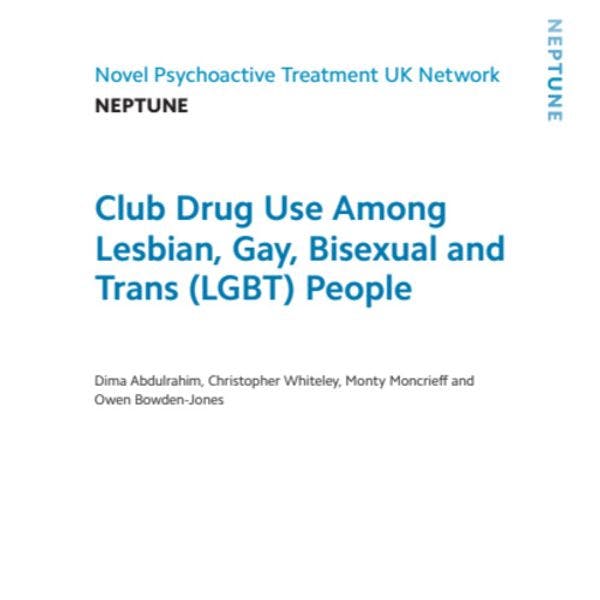Club drug use among lesbian, gay, bisexual and trans (LGBT) people
UK and international evidence suggests that the prevalence of drug use, relative to that in the general population, is high among young adults, ‘clubbers’ (those who frequently use the night-time economy and dance venues/nightclubs) and lesbian, gay, bisexual and trans (LGBT) populations, and men who have sex with men (MSM*) in particular. This document focuses on LGBT populations and is intended to guide improved service and treatment planning. It describes patterns of club drug use among these sub-populations, as reported in the literature. It looks at the factors that may impact on the use of substances in LGBT populations and discusses drug-related and other harms associated with drug use among these populations, including high-risk sexual behaviours.
Why should service planning and development address the specific needs of LGBT populations? Given the impact of socio-economic and cultural determinants of the levels and patterns of substance use, it is no surprise that factors such as membership of minority socio-demographic groups are associated with unique patterns of substance use. Different sub-groups of the overall population often show unique patterns across a number of behaviours; substance use is no exception. These patterns provide an important context for the research evidence and for the delivery of appropriate and effective treatment.
It is also extremely important to avoid using this information to stigmatise, stereotype or pathologise LGBT populations, or to sensationalise the issue. While rates of drug use among LGBT people are higher than they are in the general population, just like general population the majority of LGBT and MSM do not use substances. Among those who do use substances, the majority do so in ways which are not associated with significant harm.
Discrimination and stigma experienced by minority groups are a key context to understand the lived experiences of such groups. The experience of health inequalities, including barriers to accessing health care, is often related to membership of particular socio-cultural groups. LGBT people are less likely than the general population to seek help from health or social care services, and are not likely to reveal their sexual identity to those providing their care.
It is also important to remember that LGBT people are not a homogeneous population. LGBT people in the UK are diverse, with some coming from black, Asian and other minority ethnic populations and some from other minority groups, such as people with disabilities. Such intersectionality is, in itself, a complex and under-researched area and therefore beyond the scope of this document. More research is needed to inform a treatment response.
Keep up-to-date with drug policy developments by subscribing to the IDPC Monthly Alert.
